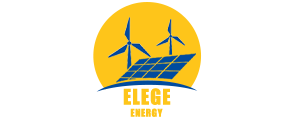Email format error
Email cannot be empty
Email already exists
6-20 characters(letters plus numbers only)
The password is inconsistent
Email format error
Email cannot be empty
Email does not exist
6-20 characters(letters plus numbers only)
The password is inconsistent


Design of Horizontal Axis Wind Turbine
Wind energy is one of the most promising renewable energy sources, and at the heart of wind energy systems is the wind turbine. Among the various types of wind turbines, the horizontal axis wind turbine (HAWT) stands out due to its efficiency and widespread use. In this blog, we will delve into the design of horizontal axis wind turbines, exploring their components, functionality, and the innovative design principles that enhance their performance.
Understanding the Horizontal Axis Wind Turbine
A horizontal axis wind turbine (HAWT) is a type of wind turbine where the main rotor shaft and the electrical generator are located at the top of a tower, and are horizontally aligned with the wind direction. This design allows for optimal wind energy capture and conversion into electricity.
Key Components of a HAWT
1. Rotor Blades: The rotor blades are the most crucial part of the wind turbine. They are designed to capture wind energy and convert it into rotational energy. Modern HAWTs typically have three blades made of composite materials like fiberglass-reinforced plastic, which offers a balance between strength and weight.
2. Nacelle: The nacelle houses the main components of the turbine, including the gearbox, generator, and control electronics. It is mounted on top of the tower and rotates to face the wind.
3. Gearbox: The gearbox increases the rotational speed of the blades to a level suitable for generating electricity. It converts the low-speed, high-torque rotation of the turbine blades into high-speed rotation for the generator.
4. Generator: The generator converts mechanical energy from the rotor into electrical energy. Most HAWTs use induction generators or permanent magnet synchronous generators due to their efficiency and reliability.
5. Tower: The tower supports the nacelle and rotor blades, elevating them to a height where they can capture stronger and more consistent winds. Towers are usually made of steel and can reach heights of over 100 meters.
6. Control System: The control system monitors and adjusts the turbine’s operation to maximize efficiency and protect it from damage. It includes sensors, actuators, and software to control blade pitch, yaw, and braking.

Design Principles of HAWTs
The design of horizontal axis wind turbines is driven by several key principles aimed at maximizing energy capture, efficiency, and reliability.
Aerodynamic Efficiency
The shape and structure of the rotor blades are critical to the aerodynamic efficiency of a HAWT. Blades are designed using airfoil profiles that provide the optimal lift-to-drag ratio, ensuring that they can capture the maximum amount of wind energy. The angle of attack and twist of the blades are carefully engineered to maintain efficiency across a range of wind speeds.
Structural Integrity
HAWTs must withstand harsh environmental conditions, including high winds, temperature fluctuations, and mechanical stress. The materials and construction techniques used in the blades, tower, and nacelle are selected for their durability and strength. Computational fluid dynamics (CFD) simulations and wind tunnel testing are often used to validate the structural integrity of the designs.
Load Management
The design of horizontal axis wind turbines must account for various loads, including aerodynamic, gravitational, and inertial loads. Load management systems are integrated to distribute these forces evenly and minimize stress on individual components. This includes blade pitch control to adjust the angle of the blades and reduce the load during high winds.
Noise Reduction
Noise is a significant concern in wind turbine design, particularly for onshore installations near residential areas. Designers use various techniques to reduce noise, such as optimizing blade shape, using serrated trailing edges, and employing active noise control systems.
Innovations in HAWT Design
Recent advancements in technology have led to several innovations in the design of horizontal axis wind turbines.
Smart Blades
Smart blade technology integrates sensors and actuators into the rotor blades to actively control their shape and position in real-time. This allows for dynamic adjustment to changing wind conditions, enhancing efficiency and reducing wear.
Floating Wind Turbines
Traditional HAWTs are installed on fixed foundations, which limits their deployment to shallow waters. Floating wind turbines, however, can be anchored in deeper waters, allowing access to stronger and more consistent wind resources. These designs use floating platforms and mooring systems to maintain stability.
Direct Drive Generators
Direct drive generators eliminate the need for a gearbox, reducing mechanical complexity and maintenance requirements. These generators are directly connected to the rotor, improving efficiency and reliability.
Conclusion
The design of horizontal axis wind turbines is a complex and fascinating field that combines principles of aerodynamics, structural engineering, and advanced materials science. Innovations in smart blade technology, floating platforms, and direct drive generators are pushing the boundaries of what HAWTs can achieve. As we continue to seek sustainable energy solutions, the evolution of HAWT design will play a crucial role in harnessing the power of the wind more efficiently and effectively.

